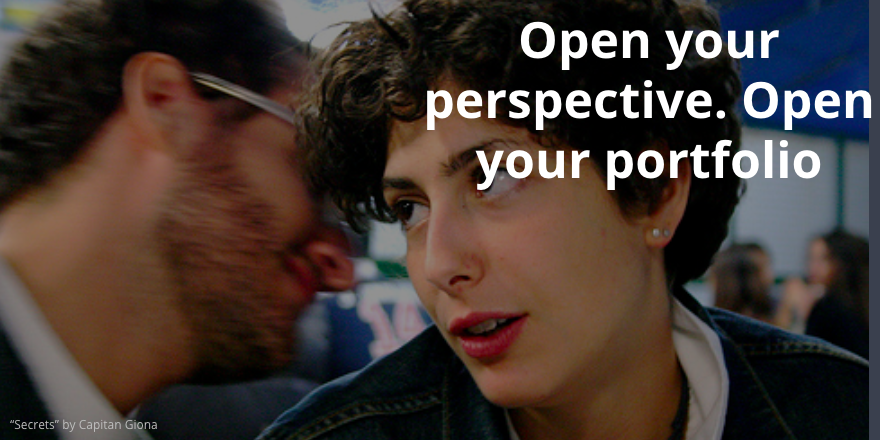
Hart Lambur is co-founder at Openfolio. He was most recently a government bond trader at Goldman Sachs.
What is Openfolio?
Openfolio is a platform where investors share their portfolios—not dollar amounts, but their contents and ideas—to see how their investments compare. Data derived from our network brings fresh insight and increased transparency to personal investing, helping everyone in our community make smarter, more confident investment decisions.
What’s the genesis story of Openfolio? What itch were you trying to scratch?

We were working on Wall Street when we hatched the idea for Openfolio. We noticed how the open culture of our trading desks, where people freely shared ideas and insights, helped everyone succeed. But we also quickly realized that there was no platform, or scalable solution, to replicate that powerful experience in the real world – even though so much untapped wisdom resides in everyone’s extended networks. We wondered: isn’t sharing information about investing at least as important as sharing information on Foursquare… or Tripadvisor… or Spotify?
That experience inspired the creation of Openfolio. It’s a new, open approach to investing, based on the simple idea that people will share their portfolios, in percentage terms, within their networks. Openfolio is a place where investors share insights and ideas, and watch how others put them into action. We all learn from each other’s successes (and mistakes).
Why do you think there’s a lack of transparency when it comes to investing whereas in other industries, we’re so much more likely to share our information? How has this opacity impacted the average investor?
The taboo nature of talking about money and the idea that investing is scary and risky intimidates people from sharing information with each other. There is a stigma that each of us will be laughed at as fools for sharing, when really sharing information is usually a great way to learn. The average investor is left in a cycle where it’s hard to know where to seek advice about best practices, and a large amount of the advice is anecdotal.
As a result, transparency and information is only present in small circles. There are investor communities such as Seeking Alpha, or Stocktwits, but these are largely for the engaged investor, often looking for opinions on specific stocks and bets they want to make. There is also expertise from investment advisors, but it makes sense for that expertise to be held there both for the benefit of the advisors’ business and their clients peace of mind.
Openfolio is designed for personal investors, who are invested in the market, but don’t want to pay 1-2% on assets for expert consultation or fully engage in active DIY investment. Openfolio is an free service that lets you engage with your investments in an informative and non intimidating way, by giving you context into what others are doing, i.e. social validation.
So, once you have more transparency on our investing behavior, what’s the next step? Can Openfolio help us make better investment decisions?
Our mission is to bring about a better understanding of investing behavior, one that complements technical expertise and avoids professional jargon. This understanding will be based on our existing intuition about how people behave. This shift creates an opportunity to bring in people that are interested in investing but may be intimidated by the topic.
This added behavioral dimension can be a really powerful teaching tool, but relies on us accurately characterizing investors based on the info they share with the community. A simple comparison of how your portfolio performed versus the average investor only scratches the surface, the best insights will come from a deeper synthesis.
For example, my portfolio holds USO, a highly volatile Oil ETF. Openfolio tells me that “People who are betting on USO trade it 2x as much as any other stock in your portfolio”. This helps me appreciate the reality of my decisions, i.e. that I own a stock that many people use for short term speculation.
The idea of Openfolio has been tried before (in various manifestations — I’m thinking Covestor, which ended up pivoting to track only professionals’ trades) — what’s different with Openfolio? Why will you guys make a business out of this where others have tried and moved into other things? Are you planning on rolling out replication technology?
The approach many other social services take is putting forth an idea that there is exists a group of high performers, who can consistently beat the market, and the way to use these services is to highlight these experts and let people emulate them. Openfolio is based on the fundamental idea that even if a minority of market beating wizards do exist, tracking and copying what they do is not the point, and is also not sustainable.
Openfolio exists to shed light on what typical investors do correctly, i.e. have a balance of stocks and funds, are sufficiently diversified, don’t trade in and out too much or get nervous when the market moves. By showing how people compare to the average based on clear metrics backed by real portfolio data from the community, we can make it easier to “get it”, i.e. this is what investing is about. It’s not about speculation, or trying to beat the market, often times it’s about deciding on a reasonable core portfolio and maybe understanding some themes (e.g. what are high dividends, diversifying into international and emerging markets), and then remembering to re-invest.
What’s next in the pipeline? Where are you taking the business?
Today, our sole focus is to create a platform that is useful for anyone that has investments, and foster a vibrant, engaged community. This is fun, exciting, and keeps us busy. Tomorrow? Actionable information and advice, backed by community driven data, which may be delivered through a subscription model or integrated into a service to help users understand and choose from different investing services. Having said that, our core product will always be a free.


